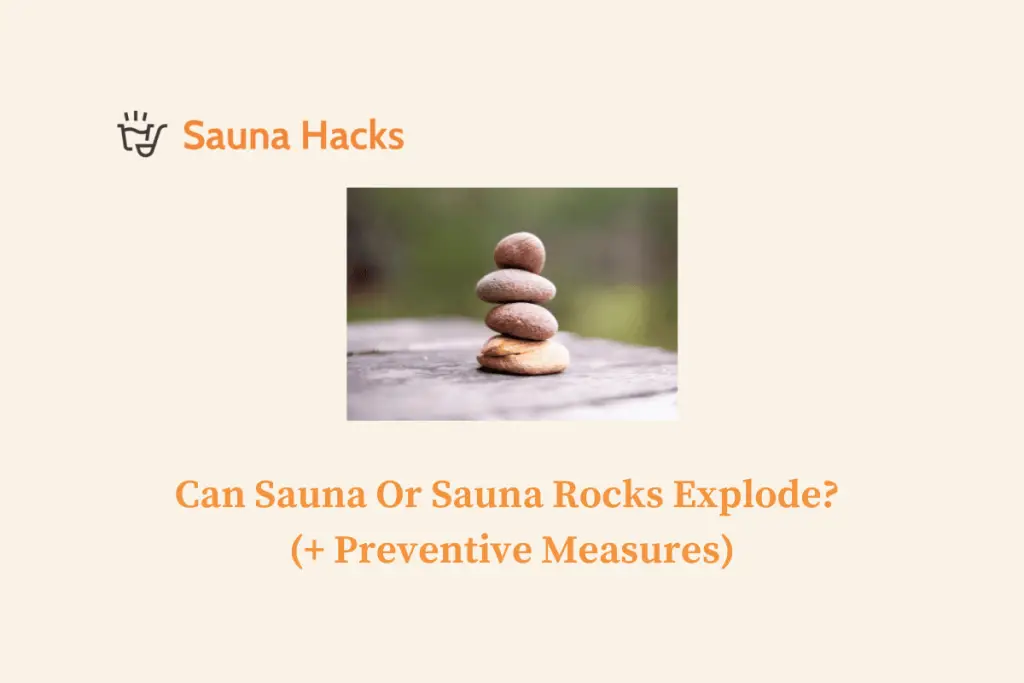Hot tubs are a popular way to relax and unwind, but they can also pose certain risks if not used properly. One such risk is the development of heat cramps, a condition that can cause muscle spasms and discomfort. Understanding the causes and effects of heat cramps is crucial for anyone who enjoys using a hot tub. In this article, we will delve into the complexities of heat cramps and explore how they can be triggered in the body. We will also discuss the importance of hydration and provide precautionary measures to prevent heat cramps when using a hot tub.
Key Takeaways
- Heat cramps are muscle spasms caused by dehydration and electrolyte imbalances.
- A Jacuzzi/hot tub is a heated pool that uses jets to create bubbles and massage the body.
- Hot water can cause blood vessels to dilate, increase heart rate, and lead to dehydration.
- Heat cramps are triggered by the loss of electrolytes and fluids through sweating.
- Dehydration is a major factor in the development of heat cramps and can be prevented by staying hydrated.
- Hydration is crucial when using a Jacuzzi/hot tub to prevent heat cramps.
- Precautionary measures to prevent heat cramps include limiting time in the hot tub and avoiding alcohol and caffeine.
- Signs and symptoms of heat cramps include muscle pain, spasms, and weakness.
- Treating heat cramps in a Jacuzzi/hot tub involves moving to a cooler area, drinking fluids, and stretching.
- Enjoying a Jacuzzi/hot tub without risking heat cramps involves staying hydrated, taking breaks, and being aware of the signs and symptoms of heat cramps.
Understanding Heat Cramps and their Causes
Heat cramps are a type of muscle cramp that occur as a result of prolonged exposure to high temperatures. Unlike other heat-related illnesses such as heat exhaustion or heat stroke, heat cramps primarily affect the muscles rather than the entire body. They are characterized by painful muscle spasms that can occur in various parts of the body, including the legs, arms, and abdomen.
There are several factors that can trigger heat cramps. One of the main causes is physical exertion in high temperatures. When we engage in strenuous activities such as exercising or working out in a hot environment, our bodies produce more heat than they can dissipate. This excess heat can lead to dehydration and electrolyte imbalances, which in turn can cause muscle cramping.
To illustrate the complexity of heat cramps and their causes, let’s consider an example. Imagine a person who spends a hot summer day gardening under the scorching sun. They may not realize it at first, but their body is gradually losing water through sweat, leading to dehydration. As they continue to exert themselves physically, their muscles become fatigued and more prone to cramping. The combination of high temperatures, physical exertion, and dehydration creates the perfect storm for heat cramps to occur.
What is a Jacuzzi/Hot Tub and How Does it Work?
Hot tubs, also known as Jacuzzis, have been around for centuries and have evolved significantly over time. They were originally used for therapeutic purposes, with ancient civilizations such as the Romans and Greeks enjoying the benefits of hot water immersion. Today, hot tubs are a common feature in many homes and spas, providing a luxurious and relaxing experience.
The basic mechanics of a hot tub involve heating and filtering the water to maintain a constant temperature. The water is heated using electric or gas-powered heaters, which can be adjusted to the desired temperature. The filtration system ensures that the water remains clean and free from debris, using a combination of pumps, filters, and chemicals.
While the concept of a hot tub may seem simple, the technical aspects can be quite complex. The heating and filtration systems require careful calibration and maintenance to ensure optimal performance. Additionally, the various components of a hot tub, such as jets and controls, can vary in design and functionality. Understanding how a hot tub works is essential for using it safely and effectively.
The Effects of Hot Water on the Body
When our bodies are exposed to hot water, several physiological changes occur. One of the immediate effects is an increase in heart rate and blood flow. This is because the body is trying to cool itself down by redistributing heat from the core to the skin’s surface. As a result, our heart works harder to pump blood throughout the body, leading to an increased heart rate.
Prolonged exposure to hot water can also lead to dehydration. This occurs when our bodies lose more fluids than they take in, either through sweating or evaporation. Dehydration can have serious consequences, including dizziness, fatigue, and even heat stroke. It is important to stay hydrated when using a hot tub to prevent these risks.
Scientific studies have shown that prolonged exposure to hot water can also affect our blood pressure. The heat causes our blood vessels to dilate, which can lead to a drop in blood pressure. This can be particularly dangerous for individuals with pre-existing cardiovascular conditions. It is important to monitor your blood pressure and consult with a healthcare professional if you have any concerns.
How Heat Cramps are Triggered in the Body
Heat cramps are triggered by a combination of muscle fatigue and electrolyte imbalances. When we engage in physical activity in high temperatures, our muscles work harder and become fatigued more quickly. This muscle fatigue can disrupt the normal balance of electrolytes in our bodies, such as sodium, potassium, and calcium.
Electrolytes play a crucial role in muscle function, helping to transmit signals between nerve cells and allowing muscles to contract and relax properly. When the balance of electrolytes is disrupted, muscle cramps can occur. This is why heat cramps often affect individuals who engage in strenuous activities in hot environments.
To illustrate the complexity of heat cramps, let’s consider a hypothetical scenario. Imagine a person who spends their day hiking in the mountains on a hot summer day. As they climb higher, the temperature rises, causing them to sweat profusely. This excessive sweating leads to dehydration and an imbalance of electrolytes in their body. As they continue to exert themselves physically, their leg muscles become fatigued and more prone to cramping. The combination of high temperatures, physical exertion, dehydration, and electrolyte imbalances creates the perfect storm for heat cramps to occur.
The Role of Dehydration in Heat Cramps
Dehydration plays a significant role in the development of heat cramps. When we sweat excessively in hot environments, our bodies lose water at a rapid rate. This loss of fluids can lead to dehydration, which can exacerbate muscle cramping.
When we are dehydrated, our bodies have a harder time regulating body temperature. This is because sweat helps to cool us down by evaporating from the skin’s surface. When we are dehydrated, there is less sweat available for evaporation, making it more difficult for our bodies to cool down. This can lead to an increase in body temperature and an increased risk of heat cramps.
To stay hydrated when using a hot tub, it is important to drink water before and after soaking. It is also a good idea to have a water bottle nearby while in the hot tub to ensure you can hydrate as needed. Avoiding alcohol and caffeine, which can contribute to dehydration, is also recommended.
While the technical language used in previous sections may have created a sense of complexity and confusion, it is important to remember that staying hydrated is a simple and practical way to prevent heat cramps when using a hot tub. So, don’t forget to drink plenty of water and stay hydrated!
The Importance of Hydration When Using a Jacuzzi/Hot Tub
Staying hydrated in a hot tub environment can be challenging due to the combination of high temperatures and prolonged exposure to hot water. However, it is crucial to prioritize hydration to prevent heat cramps and other heat-related illnesses.
One creative way to stay hydrated in a hot tub is by infusing your water with fruits or herbs. This not only adds flavor but also provides additional nutrients and electrolytes. For example, adding slices of cucumber or lemon can help replenish electrolytes lost through sweating. Mint leaves or basil can add a refreshing twist to your water, making it more enjoyable to drink.
Another option is to drink electrolyte drinks or sports drinks that are specifically formulated to replenish fluids and electrolytes lost during physical activity. These drinks often contain a balanced mix of sodium, potassium, and other essential minerals that can help prevent dehydration and muscle cramping.
It is also important to listen to your body and drink water whenever you feel thirsty. Thirst is a sign that your body needs fluids, so it is important to respond to this signal and hydrate accordingly. Keep a water bottle nearby and take regular sips throughout your hot tub session to ensure you are staying hydrated.
Precautionary Measures to Prevent Heat Cramps in a Jacuzzi/Hot Tub
To prevent heat cramps when using a hot tub, it is important to take certain precautionary measures. Here are some practical tips to keep in mind:
– Limit your soak time: Prolonged exposure to hot water can increase the risk of dehydration and heat cramps. It is recommended to limit your soak time to 15-20 minutes at a time.
– Avoid alcohol consumption: Alcohol can contribute to dehydration and impair your body’s ability to regulate temperature. It is best to avoid alcohol when using a hot tub.
– Take breaks and cool down: If you start to feel overheated or fatigued, take a break from the hot tub and cool down. You can sit in a shaded area or use a cool towel on your neck or forehead.
– Monitor your body temperature: It is important to be aware of how your body is responding to the heat. If you start to feel lightheaded, dizzy, or experience muscle cramps, it may be a sign that you need to cool down and hydrate.
– Consult with a healthcare professional: If you have any pre-existing medical conditions or concerns about using a hot tub, it is best to consult with a healthcare professional before doing so. They can provide personalized advice and guidance based on your specific needs.
By following these precautionary measures, you can enjoy your hot tub experience without risking heat cramps or other heat-related illnesses.
Signs and Symptoms of Heat Cramps to Watch Out For
It is important to be aware of the signs and symptoms of heat cramps so that you can take appropriate action if they occur. Here are some warning signs to watch out for:
– Muscle spasms: Heat cramps are characterized by painful muscle spasms that can occur in various parts of the body, such as the legs, arms, or abdomen. These spasms may be brief or prolonged and can range in intensity.
– Excessive sweating: Heat cramps often cause excessive sweating as the body tries to cool itself down. If you notice that you are sweating more than usual, it may be a sign of heat cramps.
– Fatigue and weakness: Heat cramps can cause fatigue and weakness in the affected muscles. You may feel tired or have difficulty performing physical tasks.
– Nausea and dizziness: In some cases, heat cramps can be accompanied by nausea and dizziness. These symptoms may indicate a more severe heat-related illness and should be taken seriously.
If you experience any of these symptoms, it is important to take immediate action. Remove yourself from the hot tub and find a cool, shaded area to rest. Drink water or a sports drink to rehydrate and replenish electrolytes. If the symptoms persist or worsen, seek medical attention.
Treating Heat Cramps in a Jacuzzi/Hot Tub
If you develop heat cramps while using a hot tub, there are several steps you can take to alleviate the discomfort and prevent further muscle spasms. Here is a step-by-step guide to treating heat cramps:
1. Remove yourself from the hot tub: The first step is to remove yourself from the hot tub and find a cool, shaded area to rest. This will help lower your body temperature and prevent further muscle cramping.
2. Stretch and massage the affected muscles: Gently stretch and massage the affected muscles to help relieve tension and promote relaxation. This can help alleviate the muscle spasms and reduce discomfort.
3. Apply heat or cold therapy: Applying heat or cold therapy to the affected muscles can help reduce inflammation and provide pain relief. You can use a heating pad or a cold pack, depending on your preference and what feels most comfortable.
4. Rehydrate and replenish electrolytes: Drink water or a sports drink to rehydrate and replenish electrolytes lost through sweating. This will help restore the balance of fluids and minerals in your body.
5. Rest and recover: Give your body time to rest and recover from the heat cramps. Avoid engaging in strenuous activities or exposing yourself to high temperatures until you feel better.
If the symptoms persist or worsen, it is important to seek medical attention. A healthcare professional can provide further evaluation and treatment if necessary.
Enjoying Your Jacuzzi/Hot Tub Without Risking Heat Cramps
In conclusion, understanding the causes and effects of heat cramps is crucial for anyone who enjoys using a hot tub. Heat cramps are triggered by a combination of factors, including high temperatures, physical exertion, dehydration, and electrolyte imbalances. Staying hydrated is key to preventing heat cramps when using a hot tub, as dehydration can exacerbate muscle cramping.
By following precautionary measures such as limiting soak time, avoiding alcohol consumption, and monitoring your body temperature, you can enjoy your hot tub experience without risking heat cramps or other heat-related illnesses. It is also important to be aware of the signs and symptoms of heat cramps so that you can take appropriate action if they occur.
Remember to listen to your body, stay hydrated, and prioritize your health and safety when using a hot tub. By doing so, you can fully enjoy the relaxation and therapeutic benefits that hot tubs have to offer. So go ahead, take a dip in your hot tub and let the worries of the day melt away.
FAQs
What are heat cramps?
Heat cramps are muscle spasms that occur due to dehydration and electrolyte imbalances in the body. They are often caused by excessive sweating during physical activity in hot and humid weather conditions.
What is a Jacuzzi/hot tub?
A Jacuzzi/hot tub is a large tub or pool filled with hot water and equipped with jets that create bubbles and a massaging effect. They are often used for relaxation and therapeutic purposes.
Can using a Jacuzzi/hot tub cause heat cramps?
Yes, using a Jacuzzi/hot tub can cause heat cramps if the water temperature is too high and the user stays in the tub for an extended period of time. This can lead to dehydration and electrolyte imbalances, which can trigger muscle spasms.
What is the ideal temperature for a Jacuzzi/hot tub?
The ideal temperature for a Jacuzzi/hot tub is between 100-104 degrees Fahrenheit. Anything above this temperature can increase the risk of heat cramps and other heat-related illnesses.
How can I prevent heat cramps while using a Jacuzzi/hot tub?
To prevent heat cramps while using a Jacuzzi/hot tub, it is important to stay hydrated by drinking plenty of water before and during the soak. It is also recommended to limit the time spent in the tub and to avoid using it if you are feeling unwell or have a medical condition that affects your ability to regulate body temperature.



